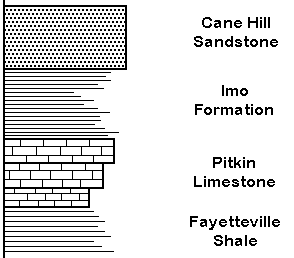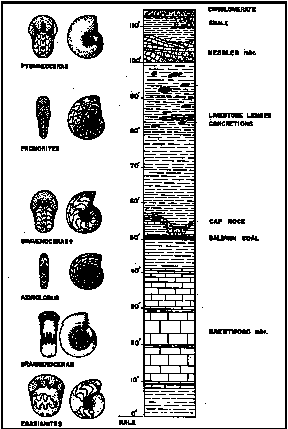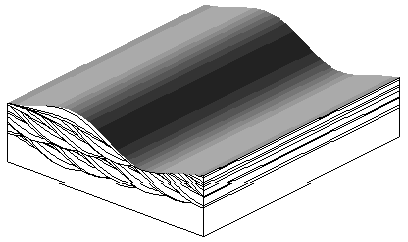
BIOLOGY 1400
Spring 2001
Lecture Exam 2
This exam consists of 50 multiple-choice questions. Each one has
only one right answer. Read each question and all possible answers
carefully before answering.
Please mark your answers on the Scantron form provided, using
only #2 lead pencil. If you erase an answer, make sure you erase
it fully, or the machine may mark it incorrect. Check carefully
to ensure that your answers are on the correct rows on the Scantron
form.
Turn in both the Scantron form and the test paper
when you are finished. Make sure your name is on both. You may
write on the test paper if you wish, but anything you write on
the test paper will not be graded.
Good luck.
For the WWW version, I have added commentary
on some of the correct answers in blue.
The first eight questions deal with a disease called familial
hypercholesterolemia, which we will just abbreviate as FH.
Persons with FH are unable to process lipids properly. They have
extremely high blood cholesterol levels, which normally cannot
be lowered by diet, and they tend to develop heart disease at
an early age.
1. Mr. Smith, a man with FH, marries a normal woman who has no family history of the disease. Some of their children are born with FH. The gene responsible for FH must be
dominant
Just because a gene causes an unusual or
abnormal condition doesn't mean it has to be recessive.
2. Specifically, about half of the Smiths' children are born with FH.(Assume that this is not just a statistical fluke.) If we represent the FH gene by a minus sign (-) and the normal gene by a plus sign (+), this means that the man's genes can be represented as:
+-
3. People with FH have a defective receptor protein called LDLR (low-density lipoprotein receptor) in their liver cells. Where in the liver cells is LDLR made, and what is the name of the process by which LDLR is made?
ribosome; translation
4. Mr. Smith's disease resulted from a mistake in copying one of his genes:
mutation
5. Mr. Smith volunteers to undergo therapy for his disease. Several of his liver cells are removed, exposed to genetically engineered viruses, and then transferred back into his liver. What should these viruses do?
inject their own DNA into the liver cells
This, by definition, is what viruses do.
6. The viruses have been genetically engineered to carry
genes for normal LDLR
All the other options (normal molecules
of LDLR, new ribosomes, transfer RNA (tRNA) molecules, or RNA
transcription factors) aren't what viruses inject into host cells.
7. Worldwide, about 1 in 500 people of European descent have FH. This statistic describes a
gene pool
8. Because he never took Biology 1400, Mr. Smith thinks that if he doesn't eat any cholesterol, his children will automatically be born with lower blood cholesterol levels. This is an example of a discredited theory called
Lamarckian evolution
9. I drive up to the town of Leslie, Arkansas fairly often,
to collect fossils from rocks exposed on the roadcuts on Highway
65. Rocks in that area form several prominent layers which you
can see very clearly just south of Leslie:

Which rock layer is the youngest?
Fayetteville Shale
Steno's Law of Superposition here.
10. How long did it take for these rocks to be laid down?
you can't tell from the information given
Steno's Law says nothing about how old the rocks are or how long they took to form. It is purely a statement about relative age.
| 11. Drive up to the area around Fayetteville and dig enough, and you'll find fossils of coiled shells called ammonoids. In fact, you'll find different ammonoids in different layers, as seen in the diagram on the right. This diagram demonstrates a principle called
the law of succession |  |
12. When describing the structure of DNA, a base is
a single or double ring-shaped molecule containing carbon and
nitrogen
13. When a eukaryotic cell is dividing, it goes through a stage in which its chromosomes coil in on themselves and become visible under the microscope. This is
prophase
14. Charles Darwin's main contribution to science was
he proposed a mechanism by which evolution could happen
15. If you cross a purebred chestnut (dark brown) horse with a purebread pale or cream-colored horse, all of the offspring will be palominos-that is, light brown or golden in color with white manes and tails. This is an example of
incomplete dominance
In lecture, I mentioned snapdragon flowers
as an example of the same phenomenon.
16. What technique did Rosalind Franklin use to work out that the DNA molecule had a helix or "corkscrew" shape?
X-ray crystallography
Remember how I attempted to demonstrate
this in lecture? With the laser and the glass prisms?
17. When a mine is dug, heaps of waste rock are left behind. Usually these waste piles are rich in metals such as copper and lead, which are poisonous to plants. However, plants that can tolerate poisonous metals have become very common in many mining regions. This is an example of
natural selection
18. The molecules that actually move the amino acids into place during protein synthesis are
transfer RNAs
Ribosomes aren't molecules (they're clusters
of molecules, technically).
19. A human gene known as HoxA1 codes for a protein that binds to DNA and "turns on" or "turns off" other genes. HoxA1 is a
regulatory gene
The next five questions all refer to breeding small pet rodents known as gerbils.
20. Gerbils have a gene for fur color that may come in two "forms": golden and gray. These "forms" are
alleles
21. Suppose you mated two golden gerbils, and got some gray babies. If we represent the golden gene by the letter G and the gray gene by the letter g, what genes must the parents be carrying?
father Gg, mother Gg
"father GG, mother gg" and "father gg, mother GG" are ruled out, because we said both parents were gold. "father Gg, mother GG" and "father GG, mother Gg" are ruled out because all of their babies would be gold.
22. A second gerbil gene also comes in two forms. One form, which is abbreviated P, produces dark eyes and normal fur. The other, abbreviated p, gives red eyes and lightens whatever the the fur color is. Suppose you wanted to breed a cinnamon gerbil (light gold fur) with red eyes. What combination or combinations of genes would you aim for?
GGpp or Ggpp
23. Again, suppose you wanted to produce a cinnamon gerbil with red eyes. Which of the following gerbil matings could never produce a red-eyed cinnamon gerbil?
both parents with light grey fur and red eyes
Ooh, this was evil. . . If
both parents had gray fur, they would both be gg, which means
they could never produce a golden (GG or Gg) gerbil. You have
to have a gerbil with the golden fur alleles. Then the
pp alleles lighten that into a cinnamon color.
24. A third gerbil gene exists in either solid coat (s) or spotted coat (S) forms. S is dominant to s. Unfortunately, gerbils with two copies of the spotted gene die when they are still embryos (which is why S is called an embryonic lethal gene). Suppose you mate two spotted gerbils. About how many offspring should you get of each type?
one-third solid color, two-thirds spotted
This one was also kind of mean. . . SS
gerbils don't exist; they die before birth. Spotted is dominant
to solid, so any spotted gerbil must be Ss. Do the Punnett square,
and you get:
| S | s | |
| S | SS (dies) | Ss (spotted) |
| s | Ss (spotted) | ss (solid) |
So you get two spotted offspring for every
one solid offspring: one-third solid, two-thirds spotted. The
SS offspring don't count because they are never even born.
25. The frequencies of alleles in a population will stay the same if:
All of the above. (The population is extremely large;
no mutations take place to create new alleles; there is no migration
into or out of the population; and all individuals have an equal
chance of survival.)
26. A strand of messenger RNA has this sequence: AAUACAUGGCU. What must the sequence be of the DNA that this mRNA was made from?
TTATGTACCGA
You can rule out three options immediately
because they contain U (uracil) and not T.
27. Domestic dogs and wolves can breed with each other, and produce fertile offspring. This means that
dogs and wolves should be considered the same species
28. Which of the following is an example of homology?
Crab claws and insect legs have different functions but the
same basic structure
29. Meiosis is used to produce
egg cells AND sperm cells
30. When do the hydrogen bonds that hold DNA together break?
when the DNA replicates AND during transcription
31. The oldest fossils that have been found so far
all of the above (I.e.: were prokaryotes, are about 3.5 billion
years old, and are surprisingly similar to living bacteria)
32. When a eukaryotic cell is ready to divide, its chromosomes resemble tiny "X"s. Each half of the "X" is one
chromatid
33. When purified and isolated from living cells, viruses carry out
absolutely nothing
34. Which of these facts does not suuport the hypothesis that whales evolved from mammals that lived on land?
Whales live in the oceans.
35. A technique called ___ makes it possible to take a tiny sample of DNA and make millions of copies of it.
PCR
36. A leading "scientific creationist" Henry M. Morris, defines evolution as a "basic principle of continual development, of increasing order and complexity throughout the universe." (The Bible Has The Answer, 1985; p. 80) Why is he wrong?
Evolution includes decreases in complexity as well as increases.
Increasing complexity does NOT violates
the Second Law of Thermodynamics (because the Earth isn't a closed
system). Evolution IS happening now (I mentioned bacterial evolution,
pesticide resistance, and peppered moths as modern cases). Evolution
has NOT "been proven", because science doesn't "prove"
anything. And it's true that evolution doesn't happen at a steady,
continuous rate, but that's not relevant to Morris's definition.
(Yes, I read creationist books! I wish they paid more attention
when they read about evolution. . . you know, equal time and all
that. . .)
37. Which of these processes does NOT happen in the nucleus?
translation
38. A number of genetically engineered crops, such as corn, cotton, and soybeans, have been made to synthesize various insect-killing proteins called
Bt proteins
39. Female peacocks prefer to mate with male peacocks with large, colorful tail feathers. Males with smaller tail feathers have a poor chance of finding a mate. This is an example of
sexual selection
40. The only exception to the "Central Dogma of Molecular Biology" is provided by
retroviruses
The "Central Dogma" is that genetic
information is copied from DNA to RNA to protein. Retroviruses
are able to "reverse transcribe" genes fom RNA to DNA,
backwards from the way it normally goes.
41. A cell in an onion root has finished separating its chromosomes into two even halves; it is forming two new nuclei, and a cell wall is starting to form to divide the old cell into two. This cell is in ___, and it has just finished ___.
telophase; anaphase
42. To come up with absolute dates for rocks, you have to know
the amounts of radioactive elements in the rocks
43. DNA's so-called double helix structure was fully worked out by
Watson and Crick
44. Modern-day sand dunes are often laid down in distinctive
wavy layers, as shown in this diagram:

You can see very similar layers in the sandstone rocks of southern Utah. If you concluded that the sandstones of Utah were once sand dunes that had become hardened into solid rock, you would be using
the principle of uniformitarianism
Don't believe me? Go out to Zion National
Park or Capitol Reef National Monument in southern Utah and hike
around among the sandstone cliffs.
45. Suzi Q. Sweetie was a fifth-year freshman at Arkansas Tech. Nine months after an unusually successful fraternity-sorority mixer, Miss Sweetie gave birth to a bouncing baby boy, much to her surprise. Miss Sweetie had type A blood, and the baby had type O blood. Although she was not entirely sure just how this happened, Miss Sweetie named three possible fathers: one had type B blood, one had type O blood, and one had type AB blood. Who CANNOT be the father?
the man with type AB blood
If the baby has O blood, the baby must
have received an O allele from Mom and an O from Dad. Suzi must
therefore be AO, and the father must have at least one O allele.
The guy with type B blood could be BO -- so he could be the father
-- and the guy with type O blood must be OO, so he could be the
father. But the guy with AB blood could not be the father; he
has no O allele to pass on to any child of his.
46. Monsanto Corporation has developed genetically engineered soybean plants that resist herbicides (weed killers). Farmers who grow these soybeans can use all the herbicides they want without killing their crop. But there are hidden dangers. Which of the following is likely to happen if these plants become widely used?
herbicide-resistant weeds may be produced by natural selection
47. Babies with a rare and severe birth defect called trisomy-18 have an extra copy of one of their chromosomes. This probably results from
an error in meiosis when the parents' egg or sperm was produced
48. For two populations of desert pupfish to become separate species, what process or processes had to happen?
reproductive isolation AND natural selection
49. A nucleotide consists of three parts:
sugar, phosphate and base
50. The capital of Arkansas is
Little Rock